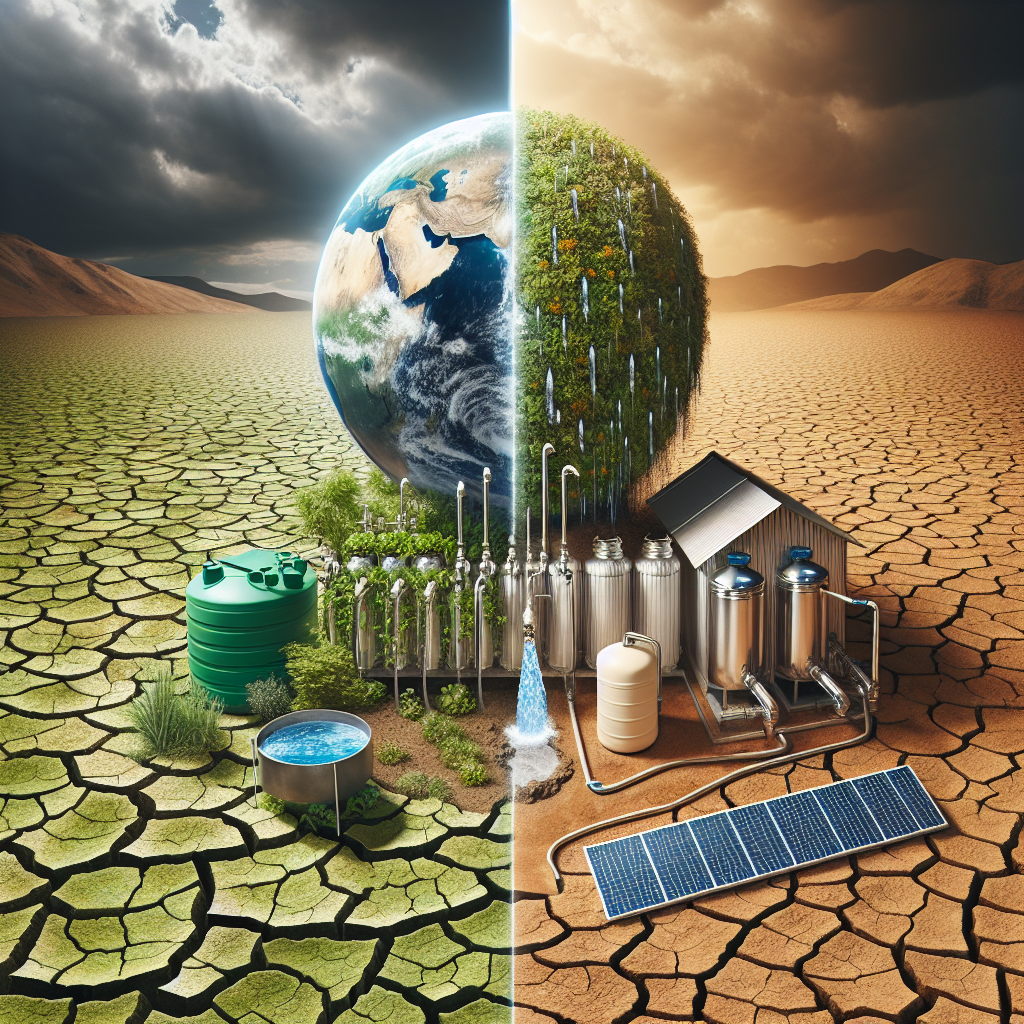The Global Water Crisis: Towards a Sustainable Solution
The global water crisis represents one of the most pervasive and significant challenges of the 21st century. It is a crisis that transcends geographical boundaries and impacts billions of people, threatening health, hindering economic development, and exacerbating environmental degradation. Yet, amidst the urgency of the crisis, there is a pathway towards sustainable solutions that requires a multifaceted and collaborative approach.
Understanding the Crisis
The crisis is twofold, encompassing both water scarcity and water quality. Water scarcity affects more than 40% of the global population, a figure projected to rise with population growth and climate change. Meanwhile, polluted water jeopardizes health, with millions dying annually from diseases associated with inadequate water supply, sanitation, and hygiene.
Compounding the issue is the uneven distribution of water resources, leading to severe shortages in arid regions and seasonal floods in others. Climate change accelerates these patterns, causing unpredictable weather and exacerbating water scarcity in vulnerable areas.
The Path to Sustainability
Solving the global water crisis requires a comprehensive and sustainable approach that addresses both immediate needs and long-term resilience. Key strategies include:
1. Improving Water Conservation and Efficiency: Both agricultural and industrial sectors must adopt more efficient water use practices. Advances in irrigation technology, water recycling, and wastewater treatment can significantly reduce water wastage.
2. Protecting Water Sources: Preserving ecosystems that support water cycles is crucial. This means enforcing laws against pollution, managing agricultural runoff, and protecting wetlands that absorb rainwater and replenish groundwater.
3. Investing in Water Infrastructure: Many regions lack the basic infrastructure for safe water supply and sanitation. Building and upgrading these facilities, especially in underserved areas, is essential for public health and economic development.
4. Enhancing Water Governance: Effective management of water resources requires clear policies, cross-border cooperation, and community engagement. This includes equitable water distribution, pricing mechanisms that encourage conservation, and transparent regulatory frameworks.
5. Embracing Innovative Technologies: From desalination to rainwater harvesting and atmospheric water generation, innovative technologies offer promising solutions to water scarcity. However, these technologies must be accessible and affordable to all.
6. Educating and Empowering Communities: Public awareness and community involvement are critical in implementing sustainable water practices. Education on water conservation techniques and the importance of protecting water sources can drive collective action towards sustainability.
The Role of International Cooperation
No country is immune to the water crisis, making international cooperation indispensable. Through shared knowledge, resources, and technology, countries can address cross-border water issues, develop sustainable water management strategies, and respond to natural disasters more effectively. Global initiatives, such as the United Nations Sustainable Development Goal 6 (SDG 6), which aims to ensure availability and sustainable management of water and sanitation for all, highlight the commitment to resolving the water crisis through international collaboration.
Towards a Water-Secure Future
Achieving a water-secure future is a daunting task, but not insurmountable. It requires the collective effort of governments, businesses, communities, and individuals. By adopting sustainable water management practices, investing in infrastructure, and fostering innovation, we can mitigate the impacts of the water crisis and safeguard this essential resource for future generations.
FAQs
Q: What is water scarcity?
A: Water scarcity is the lack of sufficient available water resources to meet the demands of water usage within a region. It can result from an absolute shortage of water, poor water quality, or the lack of infrastructure to deliver water to people.
Q: How does climate change affect the water crisis?
A: Climate change exacerbates the water crisis by altering precipitation patterns, increasing the frequency of droughts and floods, and impacting water supply. It can lead to both water scarcity in some areas and water excess in others, complicating water management efforts.
Q: Are there any successful examples of countries managing their water resources sustainably?
A: Yes, several countries have made significant strides in sustainable water management. For instance, Singapore has developed a comprehensive water strategy, including water recycling, desalination, and rainwater harvesting, to ensure a stable water supply. Israel is another example, with its advanced irrigation technology and water recycling programs.
Q: Can desalination solve the water crisis?
A: Desalination can provide a critical source of fresh water in coastal regions suffering from water scarcity. However, it is energy-intensive and can be expensive, limiting its accessibility. Desalination is part of the solution but must be integrated with other sustainable water management practices.
Q: How can individuals contribute to solving the water crisis?
A: Individuals can play a significant role by adopting water-saving habits, such as fixing leaks, using water-efficient appliances, reducing water waste, and supporting water conservation initiatives. Public advocacy and support for sustainable water policies are also crucial.
The global water crisis demands immediate and sustained action. Through a combination of local initiatives, international cooperation, and technological innovation, we can navigate towards a sustainable and water-secure future.

